ECOLOGICAL HORTICULTURE
The Garden is operated on nearly 200 acres, of which 20 are cultivated garden spaces, 24 are meadows, and 145 are protected and conserved woodlands. Stewarding habitat for pollinators and other wildlife, employing beneficial insects over pesticides, building healthy soils, celebrating native plants, and preserving natural spaces, and actively managing our meadows and many woodland spaces, are just a few of the ways we’re using plants and gardening to foster biodiversity and support ecosystem health.
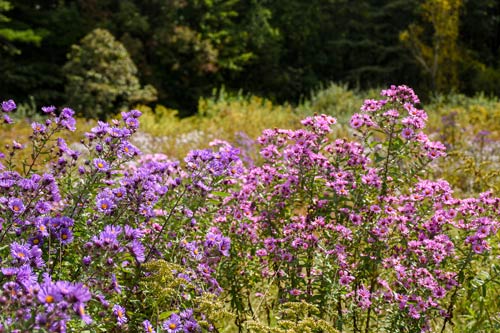
NATIVE PLANTS
Native plants play an essential role in our ecosystems. For their ecological benefits and their beauty, native plants are incorporated into many of the Garden’s formal garden spaces. They are also celebrated in naturalistic gardens like the Inner Park, a space spanning more than five acres. Meadows and woodlands surrounding the core garden property preserve native plants as well, and trails through these areas allow visitors to explore New England’s natural landscape.
A Native Plant Movement is on the rise, and many different nonprofit organizations and clubs dedicated to educating about native plants provide a wealth of resources for incorporating native plants into your yard or garden. Read our blog to learn more about the value of native plants and discover some of these resources. Also, in one of the Garden’s monthly columns with the Worcester Telegram & Gazette, we explore the challenging distinctions between native, non-native, and invasive plants. In another, we spotlight native spring ephemerals that make stand out garden additions.
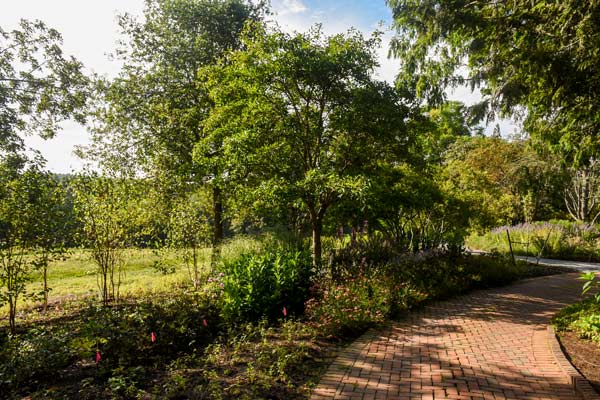
BENEFICIAL BORDER
In the Beneficial Border, a roughly 12,000 square foot garden space, the artistry of horticulture shares a spotlight with the message that plants are foundational to all life on earth. Once an out-of-control space between the Garden’s formal Lawn Garden and the Apple Orchard, the Beneficial Border exemplifies the exciting potential of ecological garden design. Borrowing from the agricultural concept of a beetle bank, the Beneficial Border features layers of native plants and other perennials that provide food resources and overwintering habitat to beneficial predatory insects and pollinators. This garden’s design transitions from formal to naturalistic, incorporating a plant palette that pleases Garden visitors and insects alike. The naturalistic layer also houses the Garden’s apiary and a log wall enclosure designed to provide habitat for many different insects including native bees. Learn more about the Beneficial Border in our blog.
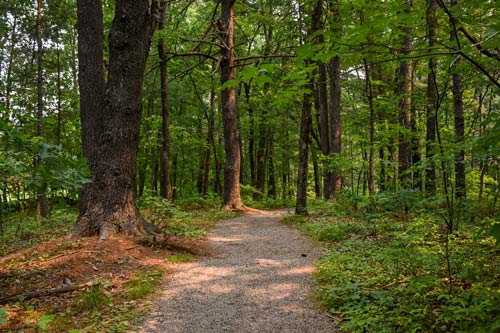
NATURALISTIC GARDENS
The Garden’s naturalistic gardens — the Inner Park, the Wildlife Refuge Pond, and the Shade Garden — are overseen by a three-person team of horticulture staff. The areas are maintained with various electric-powered equipment including string trimmers, leaf blowers, and mowers. In these spaces, staff practice maintenance techniques that are minimally disruptive such as leaving the leaves on the ground once they have fallen from trees, sourcing native plants that were grown from the ecoregion, and leaving deadwood in order to create as natural an environment as possible for plants and wildlife.
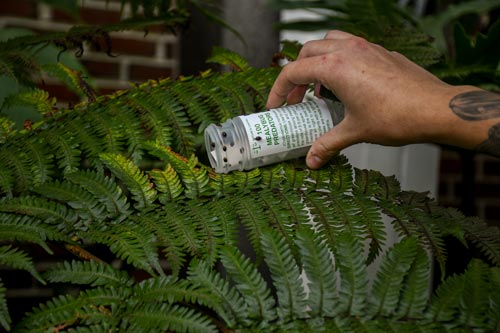
BIOLOGICAL CONTROL AGENTS
Any time a collection of plants is placed in a controlled environment, such as the conservatories at the Garden, there is potential for an insect infestation to get out of control quickly. In our Integrated Pest Management program (IPM), pesticides are utilized as a final last resort. A community of beneficial insects, also known as biological control agents, help the Garden’s horticulture team manage plant pests like mealybugs, aphids, and spider mites. Learn more about this thriving community at our blog.
Meet Our Beneficial Bugs
The mealybug destroyer is a beneficial insect that horticulture staff release every month the conservatory collection is indoors. Mealybug destroyers primarily feed on mealybugs and other scale insects and are used worldwide to treat orchards and plant collections. In the same Family as ladybugs or ladybeetles (Coccinellidae), these bugs are domed-back beetles with a flat underside. To attract the mealybugs they prey on, adult mealybug destroyers will secrete a waxy coating on their wings. This strategy is known as aggressive mimicry. The optimal environment for these insects is between 65-81°F and 70% humidity or greater.
Assassin bugs are a large order of predatory insects that feed on a wide variety of pests. The leafhopper assassin bug specifically is native to the region and remains predatory in all stages of its life cycle, feeding on pests much larger than itself. Strangely, these insects have been found to kill pests without using them as a resource (food or otherwise), making them excellent additions to any integrated pest management strategy as they are voracious predators. Leafhopper assassin bugs secrete resin on their legs to help capture pests and then use their beaks to pierce and suck the fluids of their prey out. These insects can survive for over two months in a wide range of temperatures.
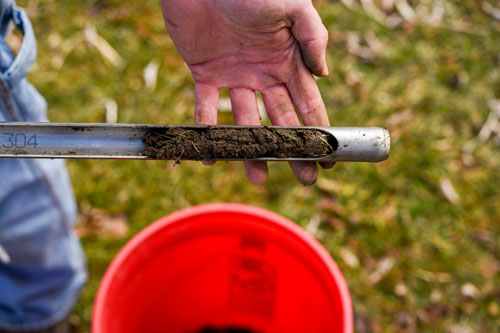
HEALTHY SOIL
Healthy soil feeds healthy plants. It is more resilient to erosion, drought, and extreme rainfall events. Healthy soil is also alive with communities of microorganisms that hold on to, or sequester, carbon dioxide, preventing it from being released into the atmosphere where it acts like a heat trapping blanket warming the planet. To help nurture a strong soil microbiome, we routinely test soil and apply the necessary nutrients, which include organic mulches, leaf litter, and compost, most of which is made onsite. All organic waste is collected and added to compost piles. In our formal gardens, composted goat manure purchased from a local farm helps enrich the soil.

